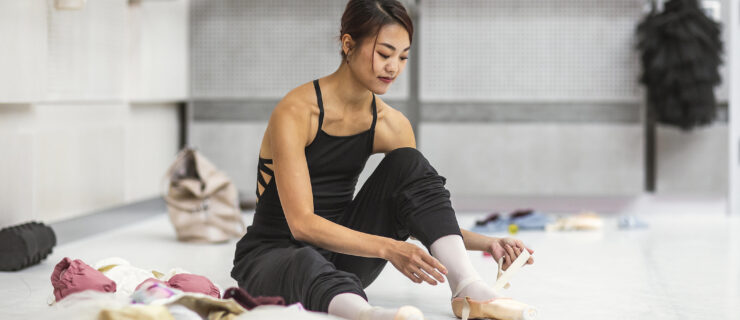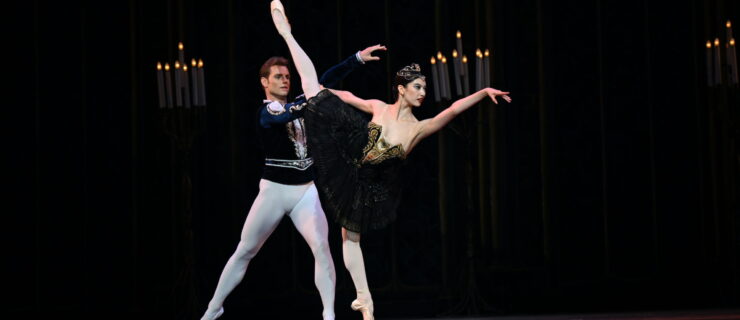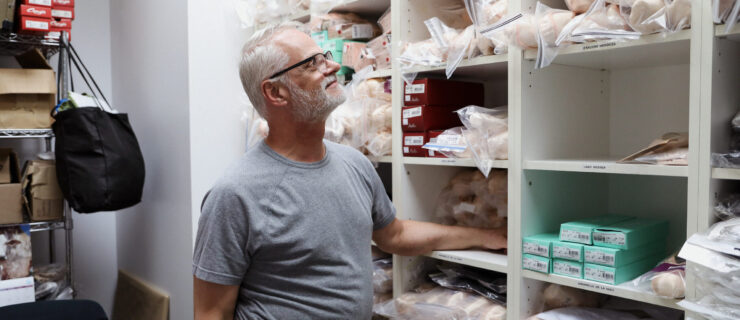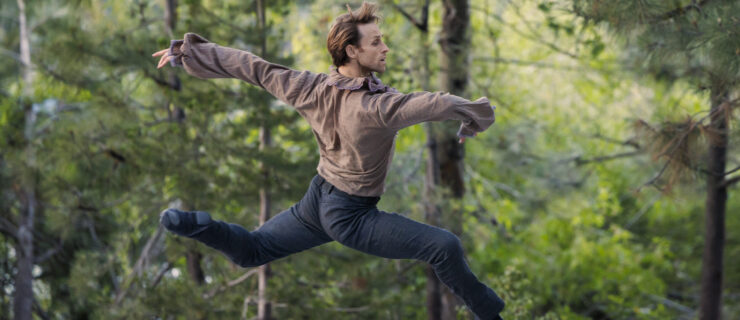Call Board
Cuban Panache Comes To DC
Ballet Nacional de Cuba returns to the Kennedy Center.
By Abi Stafford
This May, Ballet Nacional de Cuba will perform at the Kennedy Center in Washington, DC, for the first time in 10 years. New York City Ballet principal
Abi Stafford, who danced in Havana at the 22nd International Ballet Festival last fall, tells us what we can expect from Alicia Alonso’s world-famous company.
At the Kennedy Center, Ballet Nacional de Cuba will perform highlights from Nutcracker, Giselle, Sleeping Beauty and Swan Lake, as well as a full-length Don Quixote. Be sure to watch for jaw-dropping balances from prima ballerina Viengsay Valdés in Don Q, as well as Yolanda Correa’s emotional, nuanced interpretation of Giselle. Yoel Carreño (brother of American Ballet Theatre’s Jose Manuel Carreño) will dazzle with his sky-high jumps and clean multiple pirouettes. The entire corps has refreshingly unmannered port de bras and performs with a zealous flair. This company has old-fashioned classical roots but still keeps you on the edge of your seat.
We think of Cuban dancers as performers of great passion. But when I visited Cuba, I was struck by the fact that their passion is just as evident in class. Usually, I expect professional dancers to take things easy during class, to do just what they need for their own bodies. But in the company class I observed—which looked like it was based in Vaganova technique, very pure—everyone did every exercise full out; there was no “saving it for the show.” The dancers attacked even the simplest of exercises with the same verve they showed onstage.
It’s evidence of the deep respect they have for the art form, which Alicia Alonso and the Cuban National Ballet School instill in them from the beginning. Their dedication is what allows them to achieve amazing feats in performance. It’s the foundation for the flair.
Kozlova’s New Competition
Former Bolshoi and New York City Ballet principal Valentina Kozlova is no stranger to ballet competitions: Not only did she participate in them, but she also prepares students from her NYC studio for the competition circuit and is a frequent judge. Still, many were surprised when she announced that she would launch the Boston International Ballet Competition this May. Does the world need another ballet competition?
Kozlova believes so. “Often I see dancers who concentrate on technical aspects only,” she says. “The BIBC will be about artistry, not getting a medal and hanging it in your bedroom.”
Participants must select variations and/or pas de deux to perform from a carefully culled list that emphasizes versatility. “If you’re a bravura dancer, you can do Solor’s variation first, but the second solo will have to be more lyrical,” Kozlova says. Margo Sappington and Edwaard Liang have also choreographed contemporary solos that the women and men (respectively) will have to learn—from videos posted on the competition’s website. “Everyone learns classical variations from tapes,” Kozlova says. “I want to see if they can learn contemporary pieces that way. It’s the way many companies teach repertoire.”
While most competitions are for dancers ages 15–25, Kozlova has also included a student division for 13- and 14-year-olds. “These days, when you’re 13 you’re already very good technically,” she explains. “What’s lacking is the opportunity to perform. When I was training in Russia we performed every six weeks. Here it’s impossible to do that. What does that leave? Competitions.”
—Margaret Fuhrer
NYCB Sins Again
When New York City Ballet announced it would premiere a new take on Kurt Weill and Bertolt Brecht’s “sung ballet” The Seven Deadly Sins, with choreography by Lynne Taylor-Corbett, some wondered if it would tap Balanchine’s provocative original, first performed in 1933.
The answer? Nope. “It couldn’t,” Taylor-Corbett says. “There are photos of Balanchine’s production, but no notation or film.” Taylor-Corbett, whose version debuts in May, has done extensive research, including interviews with Karin von Aroldingen and Allegra Kent, both of whom danced in a Balanchine revival of the ballet. “I wanted to embrace where others had taken it,” she says. “It’s moving my own concept forward.”
That concept includes Broadway star Patti LuPone, who will sing the part of Anna I opposite NYCB principal Wendy Whelan as Anna II. “I suggested Patti because she’s the one person in American theater with the gravitas and range for the role,” Taylor-Corbett says. “And this part seemed perfect for a dancer of Wendy’s great intelligence.”
Taylor-Corbett says this is an unfortunately fitting time to remount Sins, whose split protagonist, played by both a dancer and a singer, is indicative of the troubled times in which it was conceived. “Today, people are also trying to paint everything blue or red,” she says. “But part of what makes Sins great is that it illustrates life’s repeating cycle.” —MF
Revealing Bella Arrives In Boston
European audiences, those most familiar with Jirí Kylián’s Bella Figura, are pretty blasé about toplessness. But conservative Bostonians? Not so much, which is why Boston Ballet’s inclusion of the breast-baring Bella on a spring program is raising eyebrows.
“We had the option not to participate,” says principal Kathleen Breen Combes. “I’ve never done nudity onstage, so it’ll be nerve-racking. But to get the chance to dance this beautiful work”—BB is the first U.S. company ever to perform Bella—“how could I pass that up? I’m hoping audiences will be swept away by the dance and forget about the nudity.”
Combes is perhaps more anxious about the ballet’s technical challenges. Though BB has performed Kylián works for years, Bella is “shockingly complicated,” Combes admits. “The pas de deux basically have no transitions. Everything just has to flow.” —MF
ABT’s Star-Studded Met Season
The schedule for American Ballet Theatre’s Metropolitan Opera House season, which begins this May, reads like a run-down of ballet’s hottest names: There are world premieres by golden boys Alexei Ratmansky and Christopher Wheeldon, the U.S. premiere of a work by tabloid darling Benjamin Millepied, and guest appearances by superstars Natalia Osipova, Polina Semionova and Alina Cojocaru. The Met season will also be the first time for New Yorkers to see Ratmansky’s The Bright Stream (featuring, if you choose the right cast, principal David Hallberg in pointe shoes). —MF
Alberta Ballet Is “Building A Mystery”
Alberta Ballet’s recent collaborations with Joni Mitchell and Elton John were both huge audience hits—and if the formula ain’t broke, don’t fix it. In May, the company will premiere its latest work set to the songs of a Canadian pop icon, this time Sarah McLachlan. Fumbling Towards Ecstasy, also the title of one of McLachlan’s most successful albums, will feature hits including “Building a Mystery,” “Ben’s Song” and “Ice Cream.” AB artistic director Jean Grand-Maître will choreograph; costumes by Paul Hardy (whom McLachlan has long admired) and original video projections will help bring the pop star’s songs to life. —MF
Q&A
Dominic Walsh And Sarasota Ballet: Painting In Pointe Shoes
Dominic Walsh is a busy man. In addition to running his own contemporary dance company, Dominic Walsh Dance Theater, he has been resident choreographer at the more classical Sarasota Ballet for the last two years. In 2009, he combined those worlds in The Trilogy: Wolfgang Amadeus Mozart, which had a cast that included dancers from both DWDT and SB. The two troupes will perform together again in one of Walsh’s latest ballets, the multimedia Time Out of Line, which runs April 29–May 1 in Sarasota as part of SB’s 20th anniversary season.
Pointe: Why did you decide to do another work involving both DWDT and SB dancers?
Dominic Walsh:
There’s a great chemistry between my company and the dancers at SB. And it’s always good to combine resources. There’s strength in numbers.
PT: Is there an idea or story behind
Time Out of Line?
DW:
I often play with the concept of time, particularly of time being out of the alignment you think it’s in. One way to demonstrate the passage of time is to physically make a mark—to leave a print in the sand, something that says, “I was here at this time and I did this.” Time Out of Line will explore that idea.
PT: How so?
DW:
I’m planning to cover sections of the stage in canvas and work with paint. I want the dance to create very specific patterns and markings on the floor. I’m a painter—I used to do a lot of portrait work—so I’ve always been fascinated with that medium.
PT: That sounds like it might be challenging for the more classical SB dancers.
DW:
There will actually be a lot of pointework, which I do sometimes with DWDT, but the SB dancers are better versed in it. They’ll be painting in—with!—pointe shoes. —MF
Hot Ticket Giveaways
San Francisco Ballet’s Program 7 includes the world premiere of Christopher Wheeldon’s Number Nine, as well as Renato Zanella’s Underskin and Michel Fokine’s classic Petrouchka. We’re giving away two tickets to the 8 pm performance on Saturday, April 16.
This May, Ballet Austin premieres a new version of The Magic Flute, set to a condensed version of Mozart’s score, with choreography by Stephen Mills and backdrops that feature innovative shadow puppetry. We’re giving away two tickets to the Friday, May 6, show. —MF




